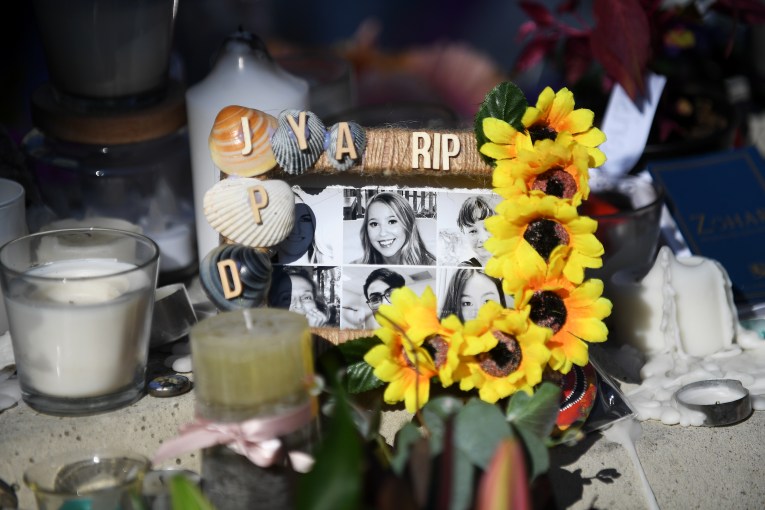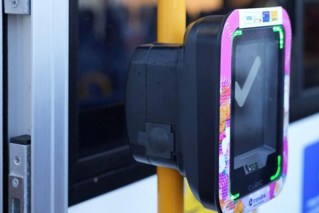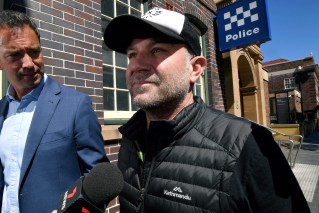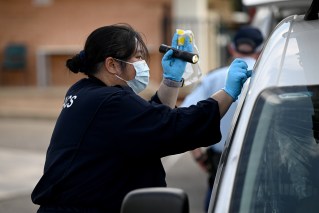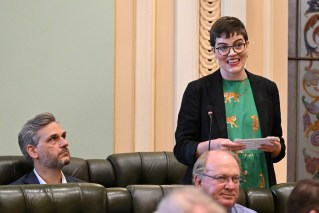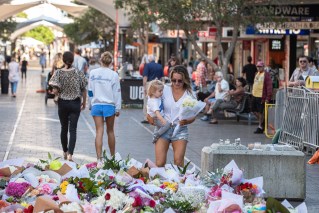‘I can’t control Mother Nature’: Annoyed Premier defends response to flood crisis
Premier Annastacia Palaszczuk has put up a strong defence of her government’s handling of southeast Queensland’s deadly flood emergency, insisting the deluge had no precedent and that “I can’t control Mother Nature”.
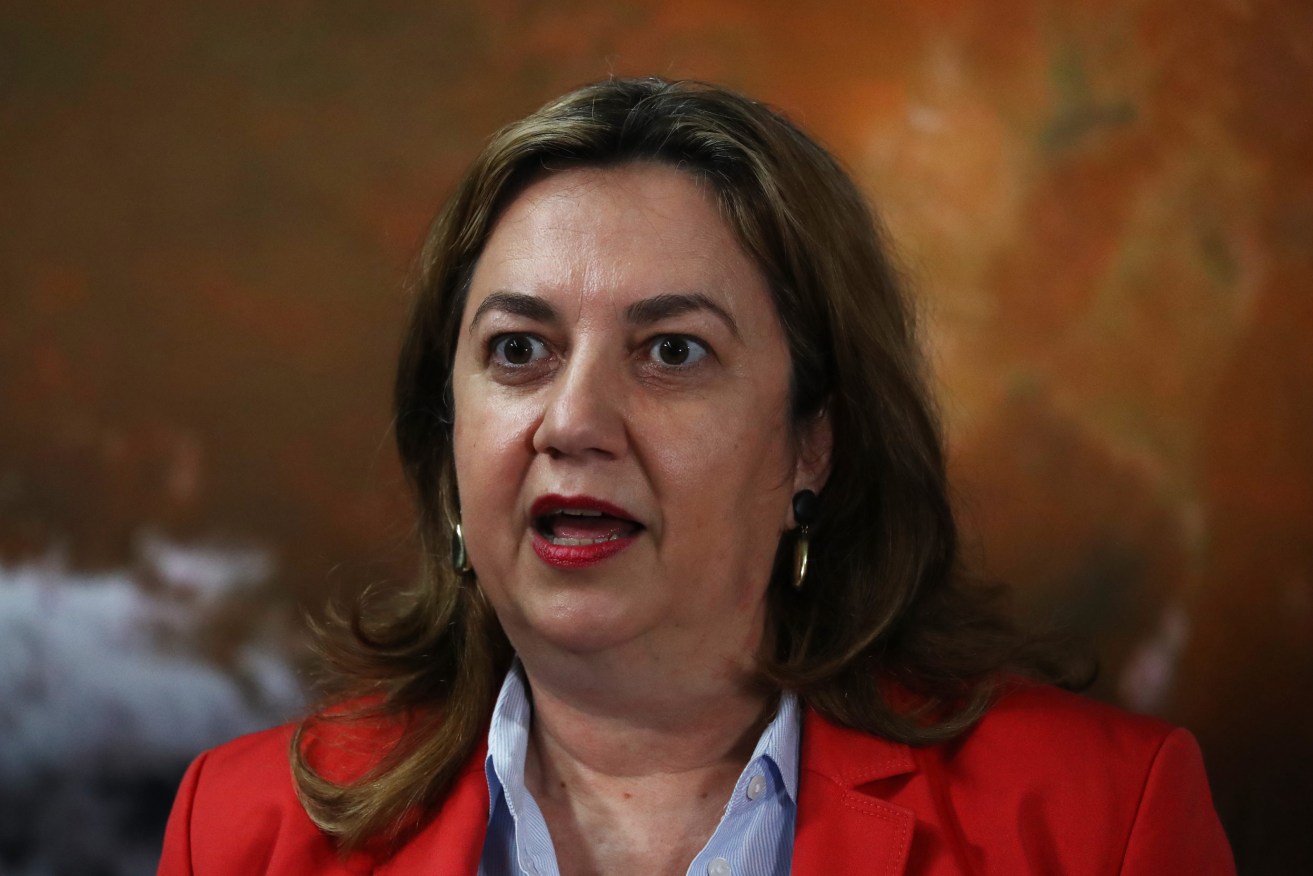
Queensland Premier Annastacia Palaszczuk speaks to the media at the Kedron Emergency Services complex. (AAP Image/Jason O'Brien)
Both the weather bureau and the region’s water authority, Seqwater, have come under pressure to explain why they seemed to be caught on the hop by the severity of the rain event, which has cost eight lives and is likely to leave up to 15,000 Brisbane homes flood-affected.
However, a visibly annoyed Ms Palaszczuk hit back, saying no one could have accurately predicted how much rain would fall in the region.
“It has been fast and it has been furious, and it has had a big impact. That is the facts,” she said.
“We didn’t know that was going to happen. This is Mother Nature. I can’t control Mother Nature, the people of this state can’t control Mother Nature, and sometimes they throw stuff at us and we’ve got to deal with it.”
The Premier faced sustained questioning about whether flood warnings were issued early enough and when exactly the Government first became aware of the potential for tragedy, what advice the Bureau of Meteorology had provided and the effect of Wivenhoe Dam’s release on the flood levels.
More than 15,000 Brisbane homes are set to be impacted by floodwaters and three people remain missing as the rain bomb moved south amid warnings of more storms later in the week.
The operator of Wivenhoe Dam, Seqwater, issued a lengthy statement, saying its release of water down into the Brisbane River was being done “in a slow and controlled way”.
“Wivenhoe is doing its job,” Seqwater said, adding that the dam is operating in a “completely different” way to what occurred in 2011, the last time Brisbane was inundated by a major flood.
“Seqwater has been able to operate under the flood manuals to strike the balance between maintaining emergency response capacity in the dam and preventing worse flooding in Brisbane,” it said.
“Flood engineers have been able to do this through slow controlled releases which has not exacerbated the natural peak of the river.”
Seqwater’s Mike Foster said “the dam is continuing to perform exactly how it was designed to perform”.
“If Wivenhoe Dam wasn’t here certainly the flooding we are experiencing in Brisbane certainly would have been worse without the dam,” Foster said. “This dam has done it’s job. It has absolutely protected Brisbane from greater flood levels.”
Lord Mayor Adrian Schrinner also praised the work of dam operators saying “I believe they have done it exactly by the manual”.
“They’ve done it exactly by the book from what I’ve seen. They’ve released the water only to coincide with the low tides, and we haven’t seen any dam releases adding to the high tides, which has been a really positive thing,” he said.
Shortly after 2pm on Monday Queensland Police issue an urgent warning about a pontoon carrying a crane which had broken free of its mooring on the Brisbane River.
“Anyone at Howard Smith Wharves, including surrounding businesses and the riverside walkway are to EVACUATE IMMEDIATELY,” police tweeted as the dangerous missile floated down the river.
“The community are asked NOT to attend Captain Bourke Park and City Botanic Gardens. Please stay home unless absolutely necessary. Now is not the time to sightsee. Please do not risk your safety or the safety of others by being out unnecessarily. No photo is worth your life.”
The Brisbane River peaked at 3.85 metres early on Monday, at the high tide but whilst that peak is now easing, further dangerous peaks are expected in the coming 24 hours.
A secondary Brisbane River peak is forecast for about 8pm on Monday evening, where it is expected to reach 3.3 metres followed by another peak again on Tuesday morning, of about 3.7 metres.
These are below the 4.46m peak reached during the devastating 2011 floods.
Queensland Police confirmed the latest death claimed by the flooding – a man, believed to be in his 50s, and his dog died after his car was washed away in floodwaters in the Currumbin Valley early on Monday morning.
The vehicle had been driven 30 to 40 metres into floodwaters and couldn’t be located by emergency services.
Surf lifesavers discovered the submerged vehicle just after 10.45am about 10 metres from the roadway.
The man and his dog were still in the vehicle.
The death is the eighth fatality in southeast Queensland’s floods as rising water levels inundate thousands of homes and businesses.
It comes as the Bureau of Meterology warns that whilst the intense rain has eased for now, further thunderstorms are expected to develop from Wednesday.
Palaszczuk urged Queenslanders to stay indoors, warning of life-threatening flash flooding, landslides and debris on roads from the weather.
“This is an extraordinary weather event and it should be treated very seriously,” she said.
Bureau of Meteorology forecaster Diana Eadie said many areas had recorded more than 70cm of rain in the past week with Mount Glorious topping out at 1.5m.
“Some of the rainfall totals that we’ve seen over the course of this event have been approaching rainfall totals that we would normally expect over the course of a year,” she said.
-with AAP
